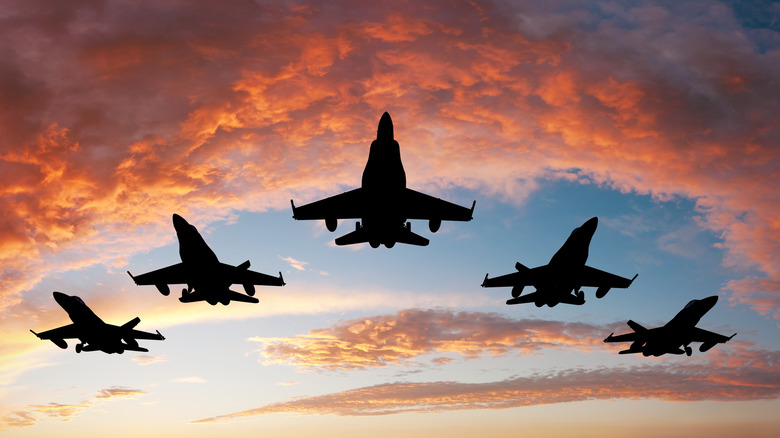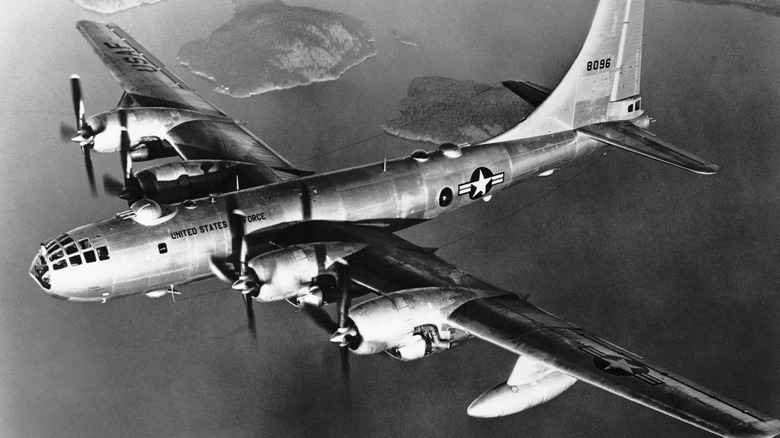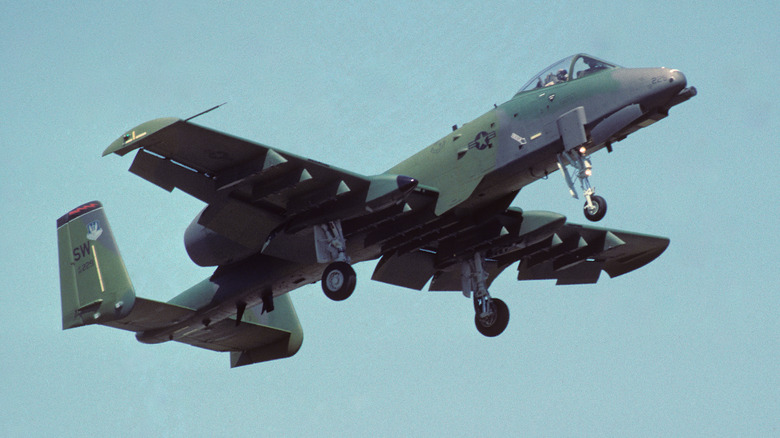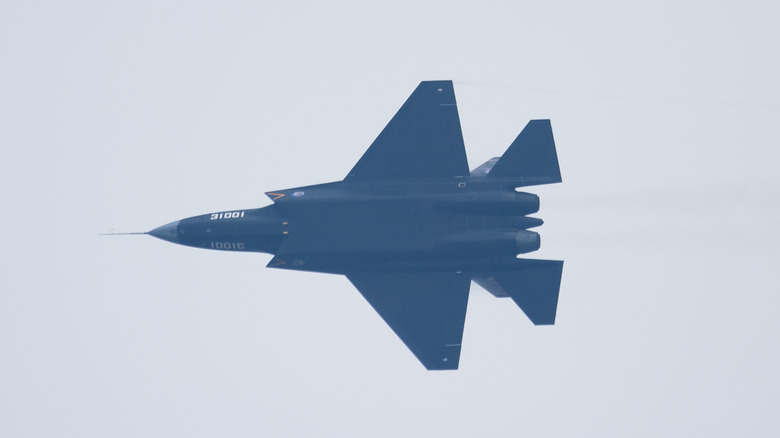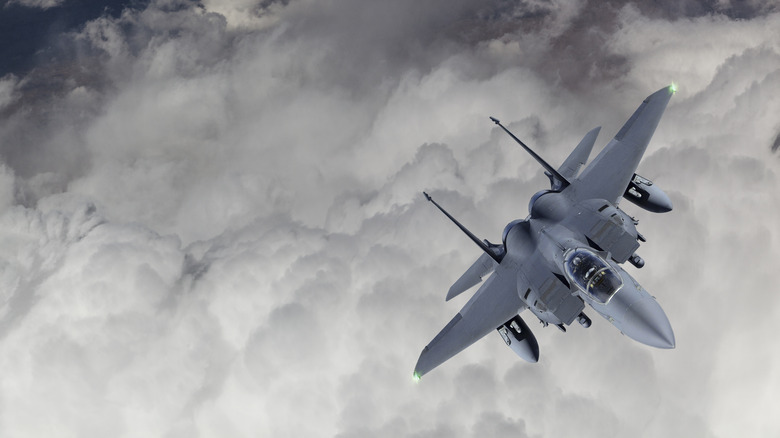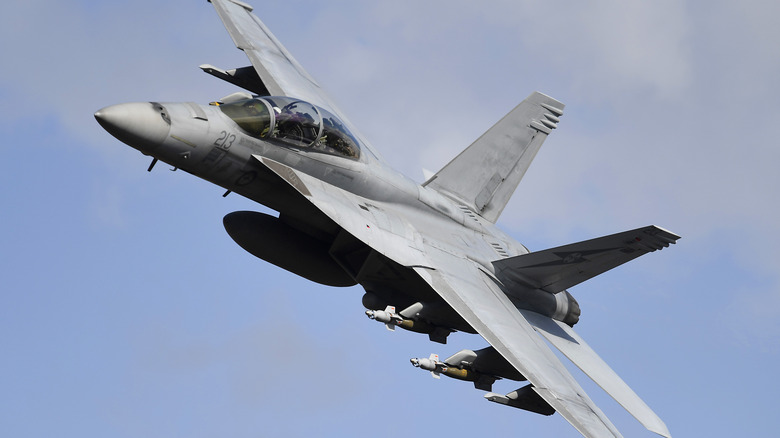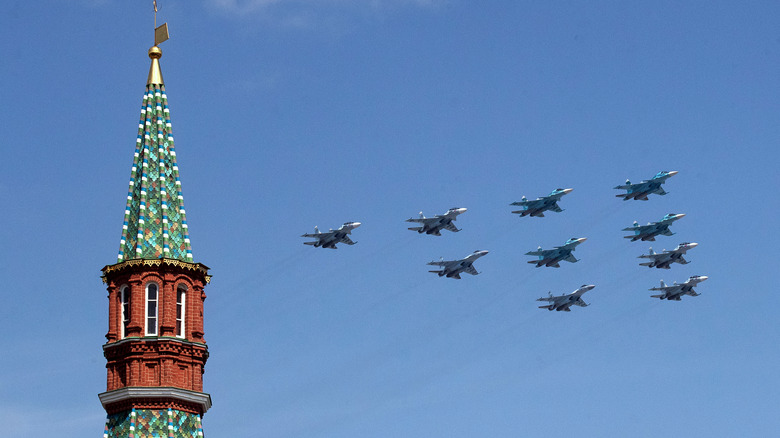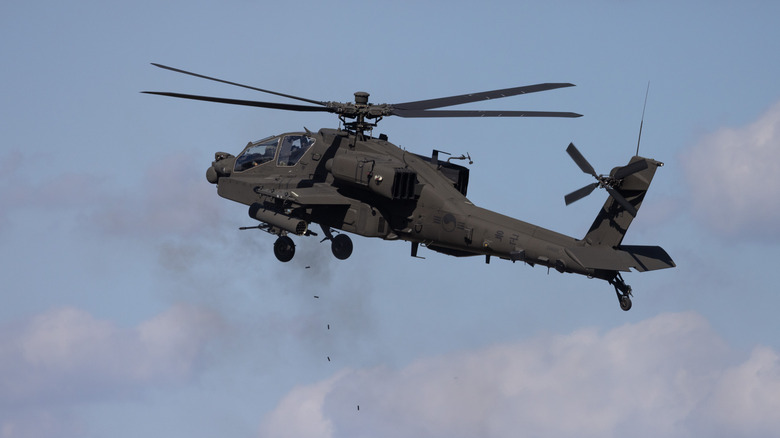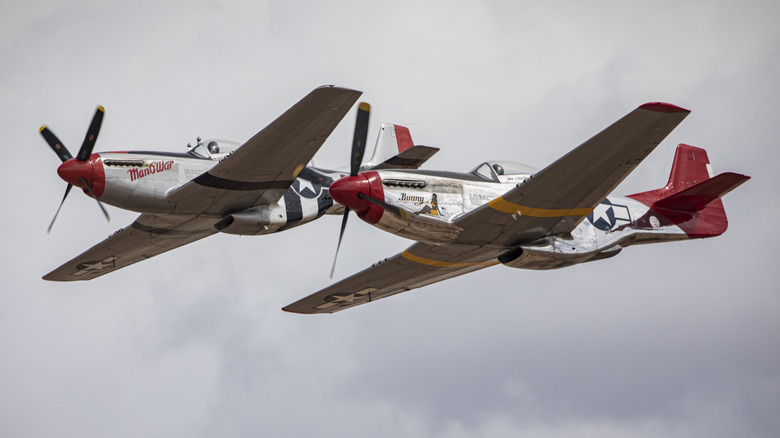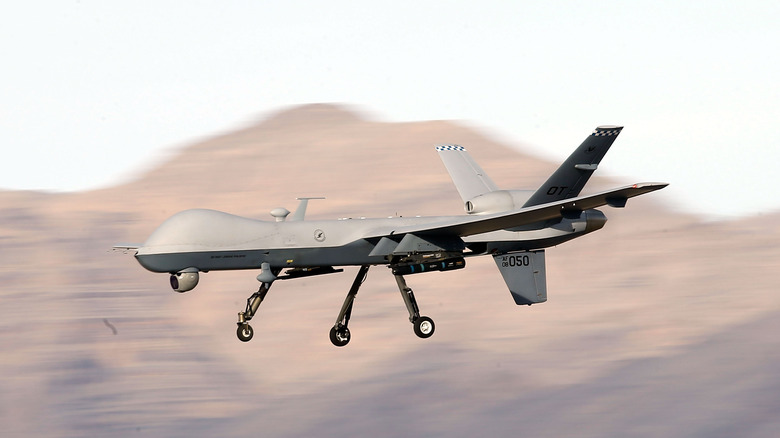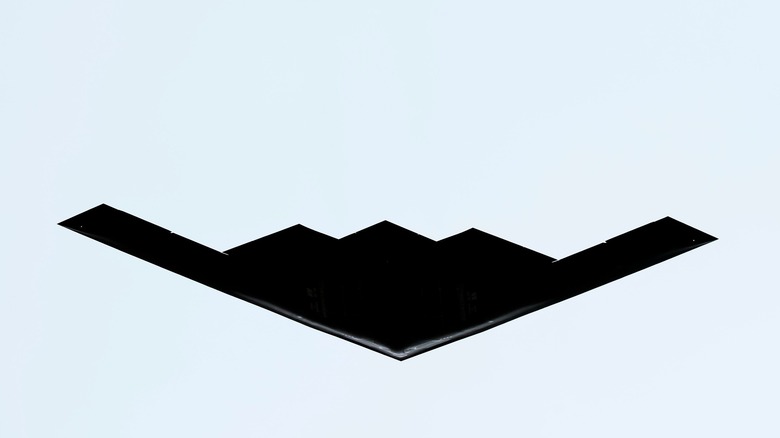10 Military Aircraft That Are Way More Dangerous Than They Look
Military aircraft have become an absolute necessity in warfare since their introduction. From the early pioneers of flight in the late 19th century to the present day, aircraft technology has evolved significantly. The first military aircraft was the 1909 Wright Military Flyer, which was purchased by the United States Army for $30,000. Over the years, the rapid development of fighter planes and bombers ensued, with the early days of military aircraft laying the foundation for the future of aerial combat.
In World War II, aircraft steadily became more advanced and played a crucial role on the battlefield. New planes and increasing advancements in their technology became symbols of ultimate air power. The modern era has witnessed even further advancements in firepower and stealth. Throughout history, military aircraft have evolved to meet the demands of warfare, constantly pushing the boundaries of technology and reshaping what it means to go into battle. There are currently 101 countries utilizing military aircraft and there's no doubt that each of these craft is formidable in its own right. However, over the years, some legendary military aircraft have proven to be far more dangerous than the rest.
The B-29 Superfortress
The B-29 Superfortress played a significant role in the first delivery of devastating nuclear weapons during World War II. The Superfortress was specifically designed for long-range strategic bombing missions, and put to use during its most infamous mission, the delivery of the atomic bomb on Hiroshima, Japan, in August 1945. The actions taken with the use of this craft helped shape and change the course of history for millions of people and generations to come.
The B-29 Superfortress design was well-executed and had several features that made it a prominent military aircraft. The destructive power of the Superfortress gave it an edge over enemies. Its pressurized cabin also allowed for high-altitude flying and assisted pilots in evading enemy planes. It was armed with multiple machine guns in remote-controlled turrets, giving it the extreme firepower necessary to dominate on the battlefield.
The Superfortress' high payload capacity allowed it to carry a significant amount of bombs and other munitions. When it came to bombing enemy targets, the Superfortress was unmatched in its capability. The unforgettable historical significance of the B-29 Superfortress and the extreme impact it had on warfare makes it one of the most dangerous military aircraft to ever exist.
A-10 Thunderbolt II Warthog
The A-10 Thunderbolt II, or "Warthog," is a highly effective and lethal plane designed with the direct intention of being used in Close Air Support (CAS) missions. Its primary role is to provide direct support to ground forces engaged in combat, making it a critical asset on the battlefield.
The Warthog's firepower is perhaps its most impressive quality. The aircraft is equipped with a powerful 30mm GAU-8/A Avenger seven-barrel Gatling gun. The gun can decimate enemy ground targets, including armored vehicles. The Warthog can carry a wide range of munitions, such as air-to-ground missiles, guided bombs, and rockets. This extensive arsenal enables the aircraft to engage various targets with precision and overwhelming firepower.
The Warthog has titanium armor protecting it from enemy fire, a perfect feature for when it's maneuvered close to the ground to take out enemy targets. The incredible firepower, easy maneuverability, and protection of the A-10 Thunderbolt II make it an extremely menacing aircraft in combat.
Shenyang J-16
The Shenyang J-16 is a multi-role fighter aircraft developed by China and the Shenyang Aircraft Corporation. This fighter jet was designed for a wide range of missions, including air-to-air combat, air-to-ground strikes, and electronic warfare. The J-16 is able to carry a diverse array of air-to-air and air-to-ground weapons, making it a welcome ally to have during times of war.
The J-16 has been deployed to maintain the security of China's western borders and is one of China's primary modes of air defense. The aircraft has a silver coating that makes it more difficult to see with the human eye. This coating also comes in handy when evading electromagnetic devices as it reduces the craft's radar signature, making it one stealthy aircraft. On top of its versatility and camouflage capabilities, the J-16 can also be refueled in mid-air and has a range of over 1,800 miles. The technology built into this aircraft isn't easily rivaled, and though a person not trained in aviation may not think it looks that threatening, it isn't something anyone would want to be on the wrong side of.
F-15 Eagle
The F-15 Eagle has a strong combination of speed, agility, and advanced weaponry. When this fighter jet takes to the skies, it's a force to be reckoned with. The F-15 has perfected maneuverability and comes equipped with high-powered weaponry and advanced technology. The aircraft's twin-engine design enables it to achieve high speeds when necessary to out-fly and out-perform any other aircraft in the vicinity.
The F-15 was designed for flawless maneuverability by way of its low-wing loading, which allows it to make even the sharpest of mid-air movements without any loss of speed. The display in the cockpit is known as a "head-up display," which can be seen by the pilot in any lighting. This enhancement means the aircraft's pilot doesn't need to look down at their controls to see the necessary information for tracking and taking down enemies.
The F-15 incorporates radar systems with long-range detection capabilities, perfecting the art of early target acquisition and tracking. This, combined with its impressive radar jamming and electronic warfare capabilities, enhances its reputation as the U.S. Air Force's foremost fighter jet of choice.
F/A-18 Hornet and Super Hornet
The F/A-18 Hornet and Super Hornet are nothing short of versatile and lethal aircraft that excel in multiple fields, including air superiority, strike missions, and aerial reconnaissance. The F/A-18's ability to quickly change direction and perform extremely tight turns allows it to outmaneuver enemy aircraft with ease. The F/A-18 can also deliver precise and devastating firepower, making it capable of carrying a multitude of missiles, bombs, and rockets.
The Hornet's advanced avionics and sensor systems provide enhanced awareness and targeting capabilities, allowing the aircraft to detect and track multiple targets simultaneously. The Hornet is designed with an impeccable ability to withstand battle damage and continue operating in hostile environments. The Super Hornet was unveiled in November 1995, and was built with increased range and technology, only enhancing the power these craft carry with them into combat. Both the Hornet and the Super Hornet are stacked with features that make them remarkably dangerous and can be critical assets in aerial warfare.
Su-35
The Su-35 jet is far more dangerous than it may appear for a variety of reasons. The Su-35 has a superior aerodynamic design, which allows it to perform remarkable maneuvers. It's also equipped with an impressive radar and targeting system. This means the Su-35 is not only able to jam the radars of its enemies, but it has the ability to detect and track multiple targets simultaneously, including stealth aircraft. Nothing is entirely hidden as long as one of these jets is in the air.
The Su-35's weapon line-up includes a wide range of missiles, guided bombs, and a 30mm cannon. Its ability to haul a large payload gives it more opportunity to dominate various types of flight missions. It was originally marketed as the superior version of the Su-27, with a heavy focus on ground attack improvements. At an impressive $43 million per jet, the number one owner and operator of the Su-35 is Russia. There's much to be frightened of for whoever comes face to face with the mighty Su-35.
AH-64 Apache Helicopter
The AH-64 Apache is utilized by the U.S. Army as an attack helicopter, and it doesn't disappoint. The firepower of the Apache isn't anything to scoff at, with its armament including a 30mm M230 Chain Gun that can easily wipe out ground targets. That isn't all for the Apache's intimidating firepower either: it's fully equipped with advanced Hellfire anti-tank missiles, Hydra 70 rockets, and Stinger air-to-air missiles. With all this offensive power also comes a mighty defense, as the Apache helicopter is covered with heavy armor protection.
The Apache also has a powerful radar sensor system that provides a 360-degree view and the ability to detect more than one target at a time, including both armored vehicles and low-flying aircraft. It's capable of tracking over 250 targets from up to three miles away and can fire two rounds per second on average. This means that it's the perfect companion for watching out for ground forces.
While the Apache is a favorite of the U.S. Army, it's also permitted to be used by U.S. allies, and around 500 of these battle-ready helicopters have been used by 16 nations by way of a military sales program. The Apache is a heavy-duty helicopter and an extremely dangerous military aircraft.
P-51 Mustang
The P-51 Mustang might be a retro-looking aircraft, but in its heyday, it certainly packed a punch in combat. It's powerful engine and lightweight airframe give it the ability to reach high speeds without compromising how well it handles.
It has a range of up to 1,000 miles and in World War II it was able to escort bombing formations to Berlin. The firepower on the P-51 Mustang is responsible for the destruction of 17% of the Luftwaffe's experienced fighter pilots in air-to-air combat during a weeklong bombing offensive in February 1944. The introduction of the P-51 Mustang was directly responsible for the dramatic decrease in the loss suffered by bombing crews.
The Mustang is one of the aircraft flown by the "Red Tails," a famous squadron of African-American pilots that carried out more than 1,500 attacks. The Mustang's involvement in World War II helped lead to a successful invasion of Normandy and greatly prevented further loss of life for ground troops.
MQ-9 Reaper
The MQ-9 Reaper may be a sleek aircraft looks-wise, but it's not a flying machine anyone would want to mess with. The Reaper is built with a variety of air-to-ground missiles, such as the Hellfire and GBU-12 Paveway II, and its ability to carry and deploy these munitions with the remarkable accuracy of laser guidance means that once it locks on target, there's little to no chance it will miss.
The Reaper is remotely piloted and can operate for long-range missions thanks to an external fuel tank capacity of 1,300 pounds. The plane's crew operates it from within the United States and maintains optimum control of the craft while completing any given mission. The ability to pilot the Reaper remotely provides efficiency without the necessity of sending more pilots into combat.
The MQ-9 Reaper is sleek, stealthy, technologically advanced, and painstakingly accurate in terms of firing power. This craft is especially dangerous because there's a chance that if one were targeting you, you wouldn't know it until it's too late.
B-2 Spirit
The B-2 Spirit is stacked with attributes that make it a top dog in the sky, including the low-observable design that allows it to evade enemy radar with incredible stealth. The design alone is enough for the B-2 Spirit to sneak up on even the most alert enemies.
The B-2 is fully loaded with an advanced navigation system and technology that allows the crew to gather and analyze real-time information. It can carry with it both conventional and nuclear weapons and its artillery capacity can range from smart bombs to cruise missiles.
This craft can go for extremely long missions without any need to refuel, giving it the ability to reach targets on any part of the planet without the need to stop or regroup. During its first operational use, the B-2 flew from Whiteman Air Force Base in Missouri to Kosovo — an impressive 31-hour flight — before attacking enemy targets and heading back without the need to refuel. During Operation Allied Force, the B-2 took part in a mere 1% of the missions but wiped out 33% of the targets in the first eight weeks. This impressive introduction to combat was just a taste of the dangers the B-2 Spirit is capable of.
